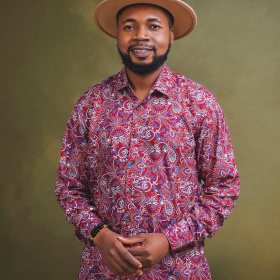Folk Music Archives (Institute for Musicology / Hungarian Academy of Sciences Budapest, Hungary)
Bio
The Folk Music Archives at the Institute for Musicology were established on 1 January 1999. However, the Folk Music Research Group of the Hungarian Academy of Sciences (established in 1951, predecessor of Institute for Musicology) has had a technical department since its creation. The Institute was created through the merging of the Bartók Archives and the Folk Music Research Group.
Besides Hungarian folk music and folk dance documents, the Archive contains invaluable, unique and irrecoverable recordings of the music, games and dance traditions of almost fifty cultures from all over the world. Focusing mainly on Europe, Asia, Oceania, Africa and South America, the recordings cover the period of 1896-2010. The importance of the collection is its complexity, wide geographic range, and historical origin, its systematic arrangement and the theoretical-methodological background ensured by an academic research institute.
The foundation of the collection was laid by the collections of Béla Bartók and Zoltán Kodály at the turn of the 19th and the 20th centuries, supported by the Museum of Ethnography and Hungarian Academy of Sciences. Since that time, pupils of Bartók and Kodály continued to enlarge, systematise and make accessible the material of the continually-growing ZTI Archive collection.
In the first period, from the late 19th century collection of Béla Vikár to the 1950’s, the sound recordings were preserved at the Museum of Ethnography (some 4,500 cylinders with about 200-250 hours of music). Until the appearance of portable magnetic tape recorders in 1955, the sound recordings were made on a Webster's wire recorder. After collecting, the recorded material was all transferred on single LPs, called AP disks (Academic Pyral).
In the sixties, folk music recordings stored in other institutions were brought into the Archive: the total phonograph collection of the Museum of Ethnography was copied onto tape, as well as authentic recordings possessed by the Magyar Radió (Hungarian Broadcast), recordings by Hungarian folk music researchers abroad, individual collections, etc. In the 1990s, following the birth of digital audio technology, LPs were taken out of circulation and production of AP disks ceased. Since 1996, recordings have all been transferred to CD.
The Archive preserves 18,000 hours of sound recordings, 200,000 meters of films, 250,000 pages of musical transcriptions, 2,000 pages of Laban dance notation and 80,000 photos.
About 70% (12,000 hours) of the sound recordings have already been digitised. Storing digitised copies on CD is a temporary solution: the archive is therefore searching for new technologies to preserve recordings for posterity.
















